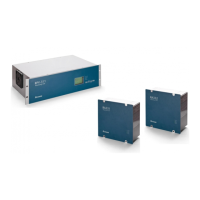Chapter 9 – TW Fault Locator
5 HOW TO TEST THE TW FAULT LOCATION IN LAB
The most complete test would be using two sets of RPV311+RA333:
1. Make sure that both RPV311 are properly time synced. For conditions that are more
realistic, the sync sources could be independent;
2. Configure a line arbitrarily long on the RPV Manager or TW Fault Locator software
connecting the two sets of equipment;
3. Configure the TW register to be triggered by an undervoltage threshold in both RPV311;
4. Connect three phase voltage to the TW analogic inputs in both RPV311 though a circuit-
breaker or test switch;
5. Switch off the circuit-breaker (or test switch), both RA333 should indicate the BUSY state,
showing that the TW is being processed. register is being processed;
6. Download both files to a computer with the TW Fault Locator tool installed.
7. Run the TW Fault Locator tool to find the fault location (Procedure described RPV311
manual, in topic 14.5). The fault location should be 50% of the line.
Alternatively, it is possible to useone RPV311 and two RA333 connected to the same RPV311. Taking care
when creating the powerline file, in which only the “line” parameter will be different, for example:
<terminal_a>LOCATION,IDENTIFIER,LINE_A</terminal_a>
<terminal_b>LOCATION,IDENTIFIER,LINE_B</terminal_b>
Another possibility that also tests the acquisition system of the RA333 module, is to use only one
RPV311+RA333 and configure the powerline file with the same parameters for both terminals, for example:
<terminal_a>LOCATION,IDENTIFIER,LINE_A</terminal_a>
<terminal_b>LOCATION,IDENTIFIER,LINE_A</terminal_b>
In this case, the TW fault locator tool will use the same file for both ends locating the fault.
For all the previous mentioned tests, the algorithm shall point the fault location at 50% of the line length, as
we are using with very short cable lengths or using the same TW register for both ends.

